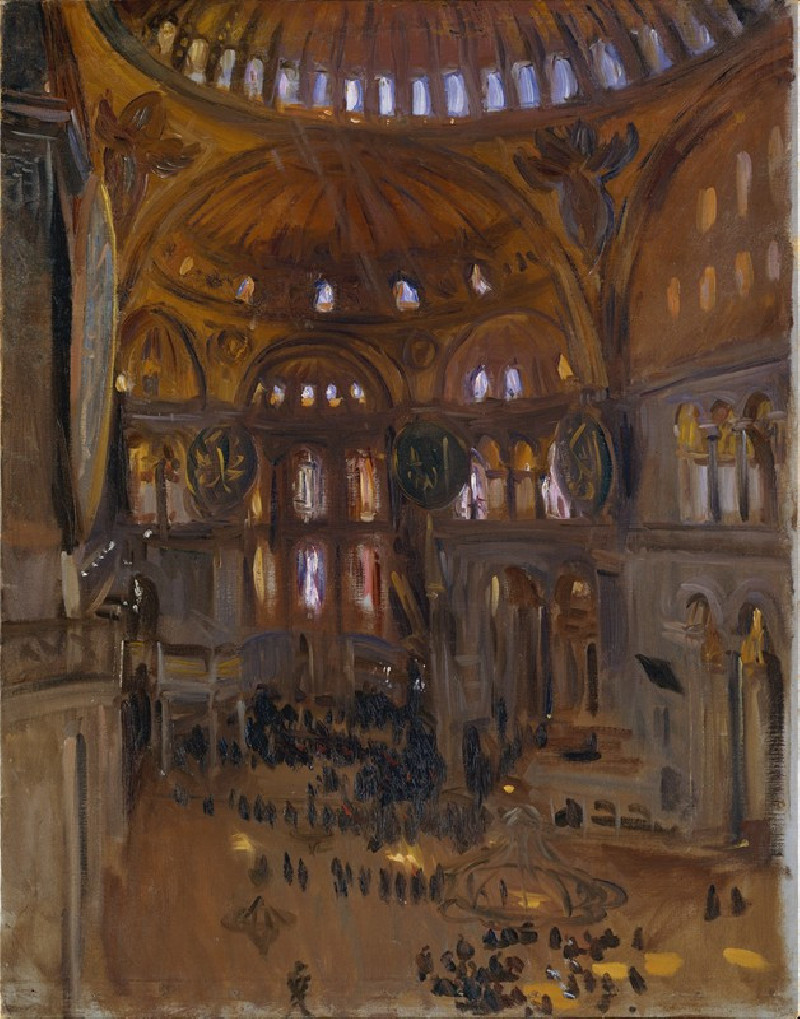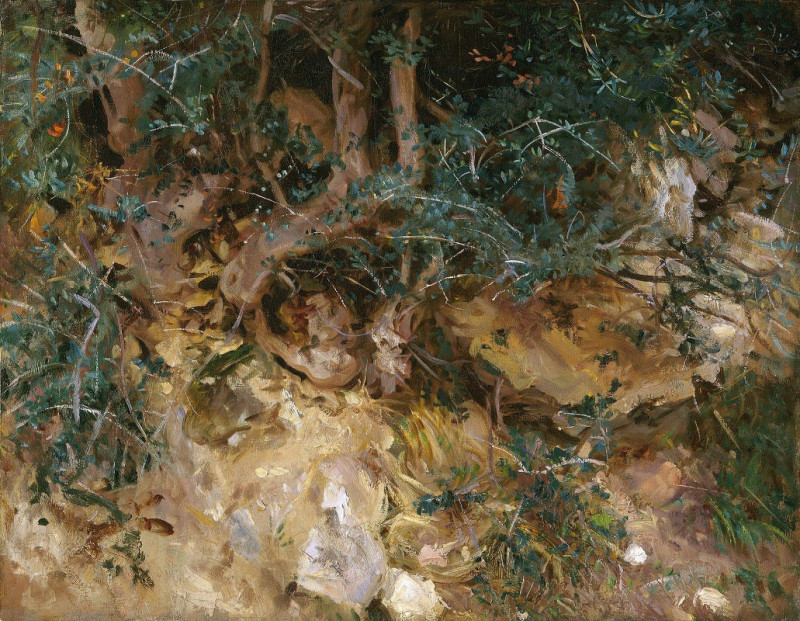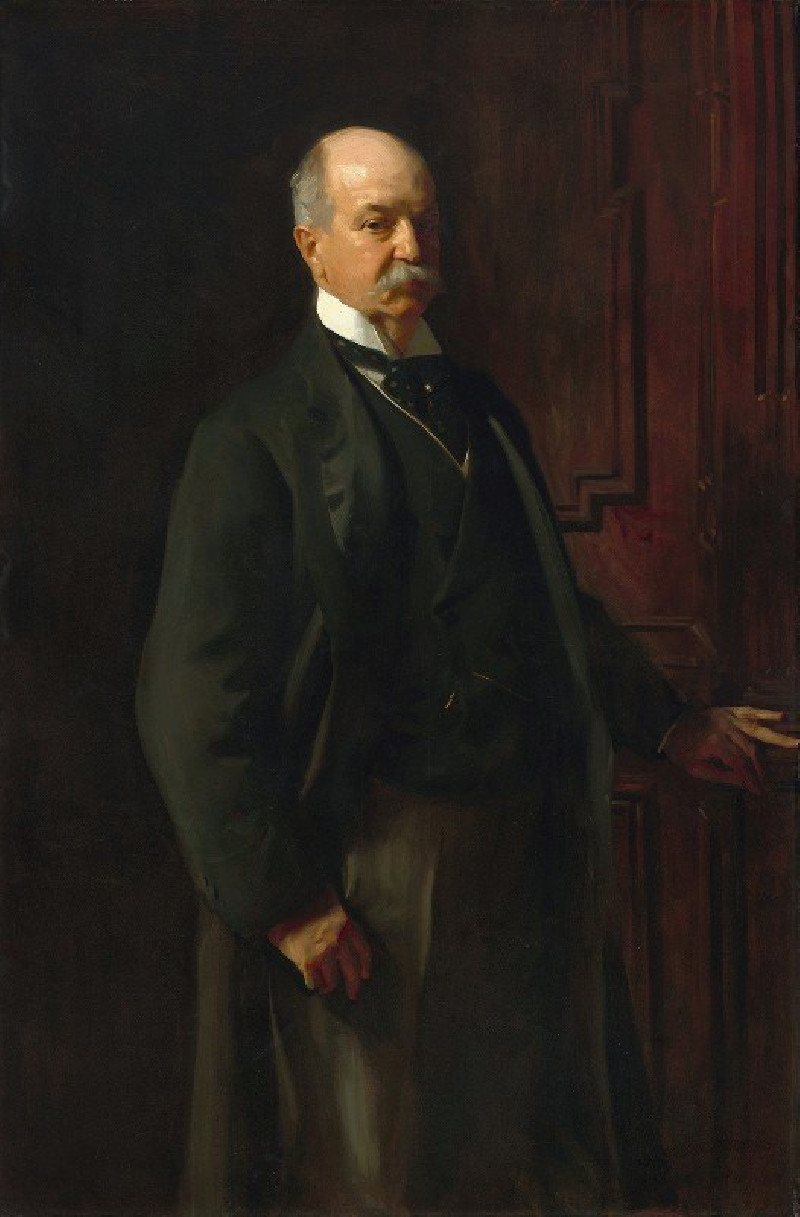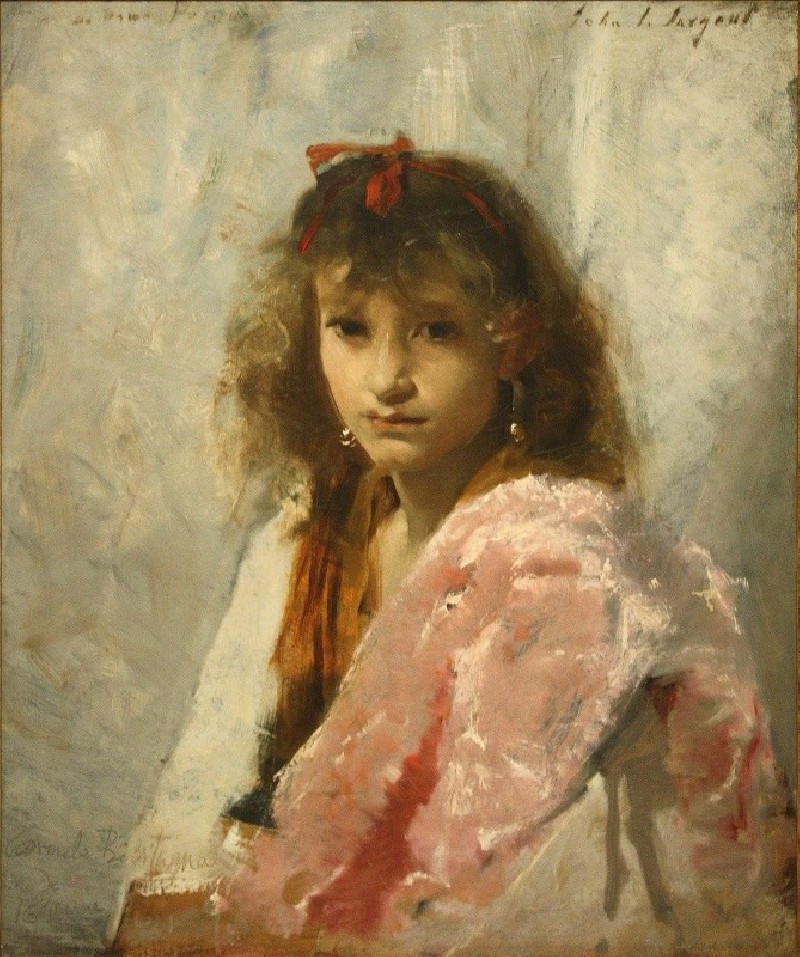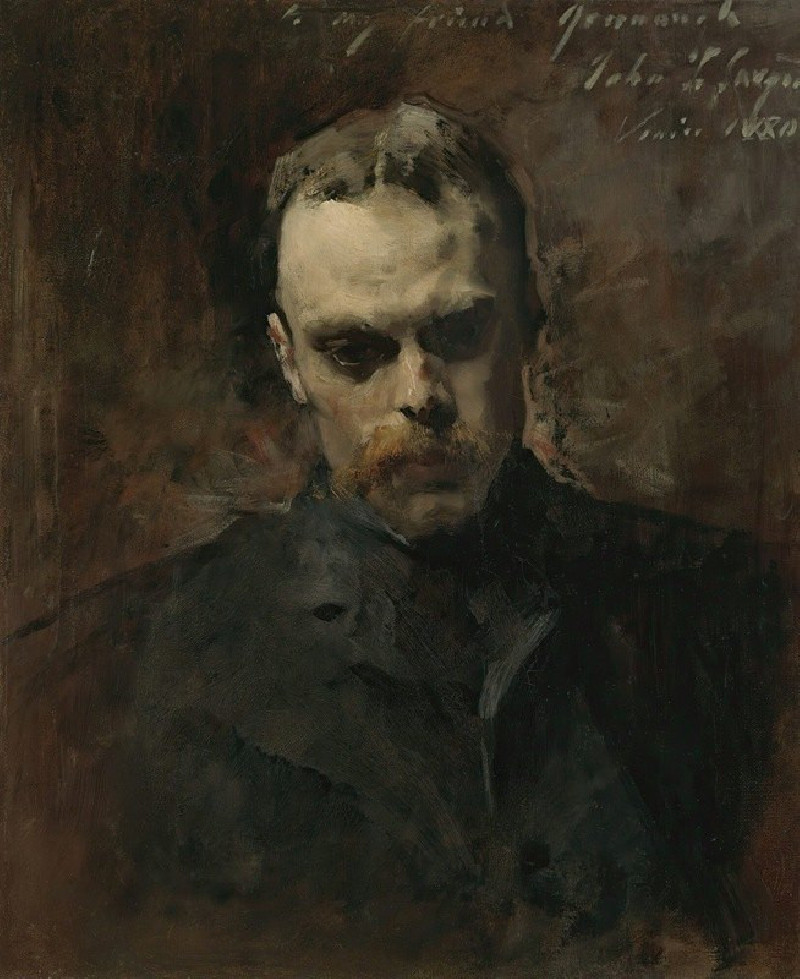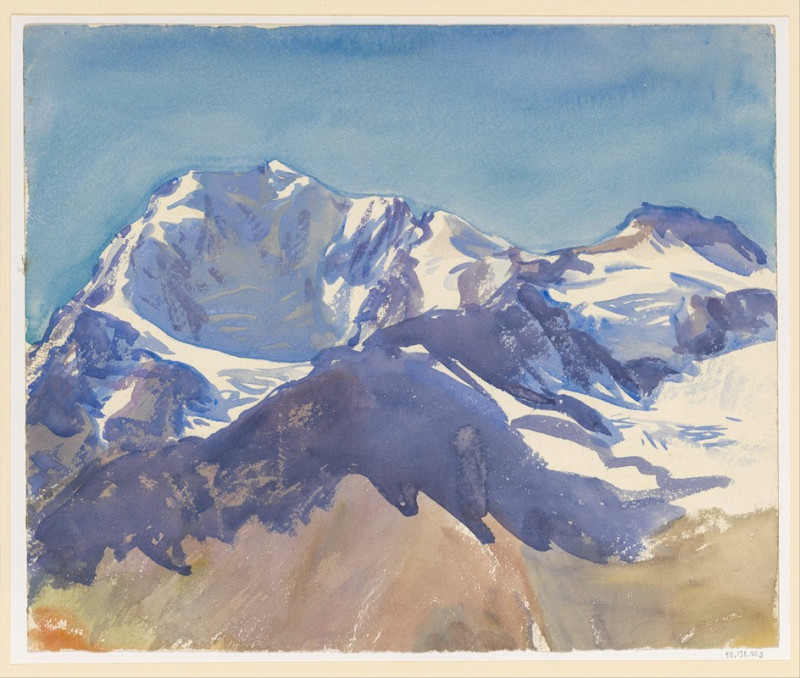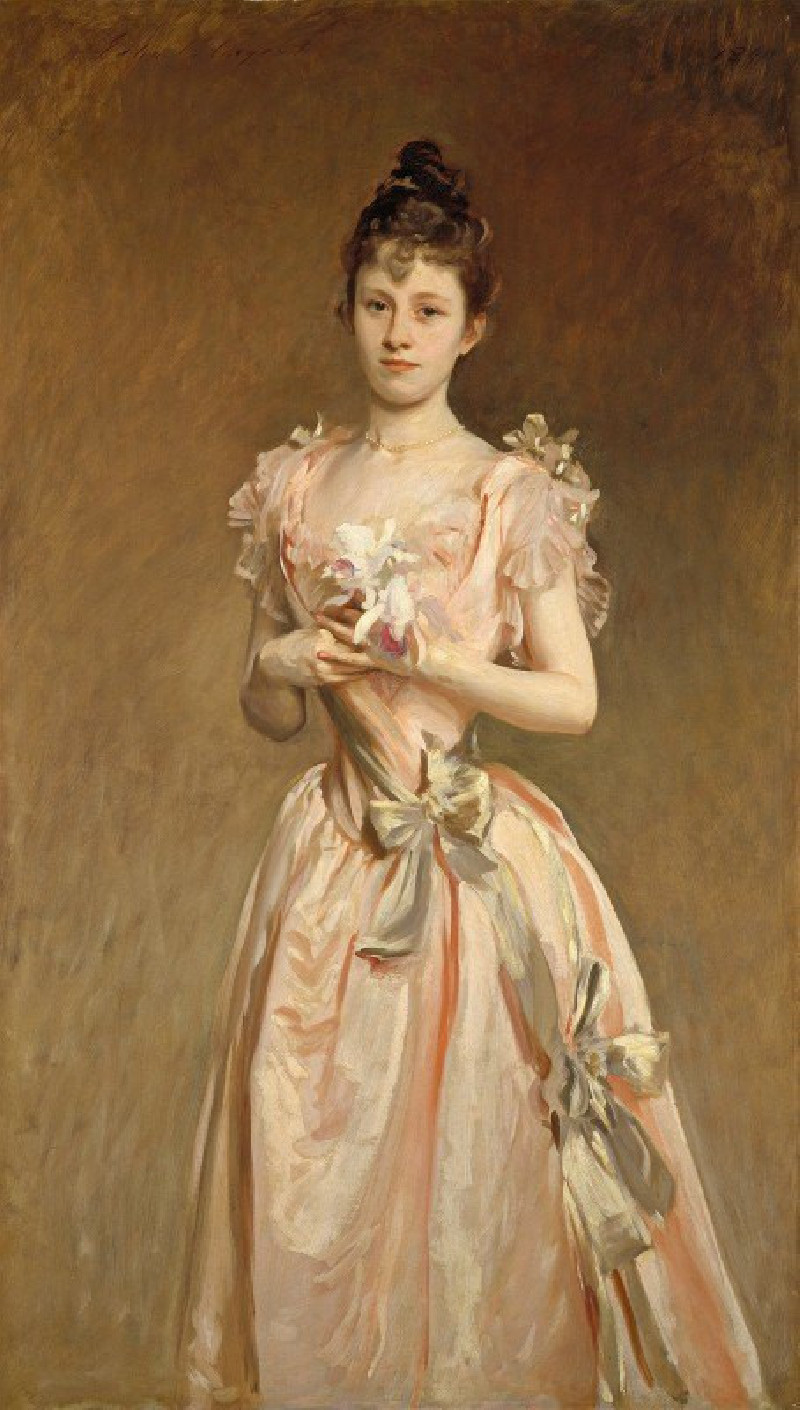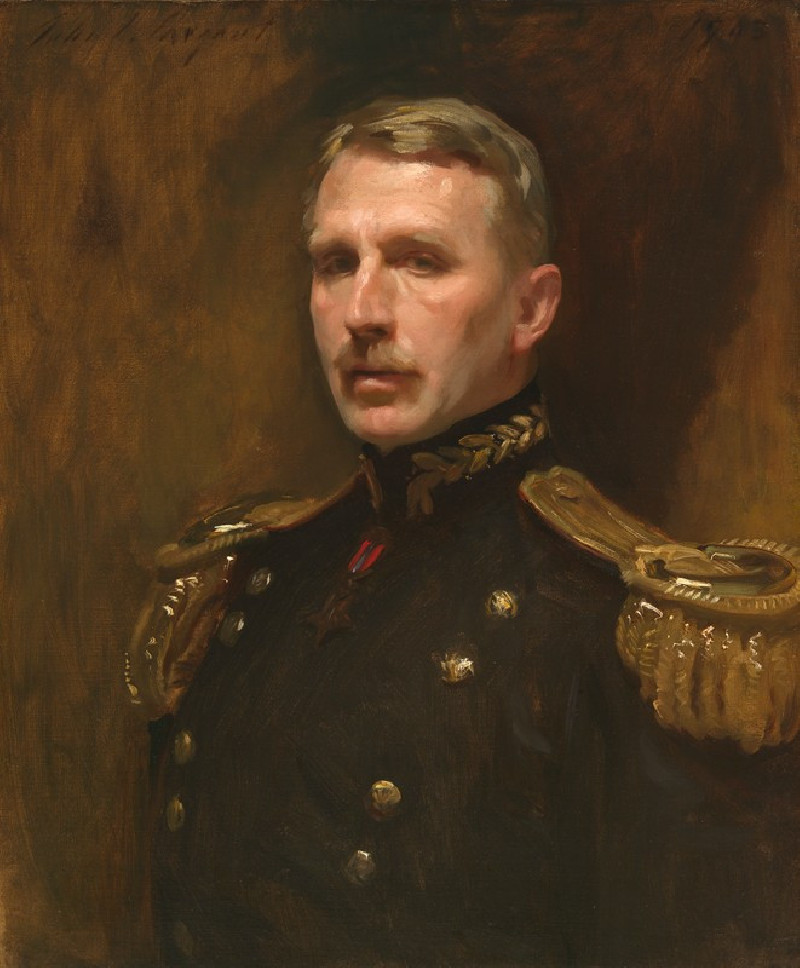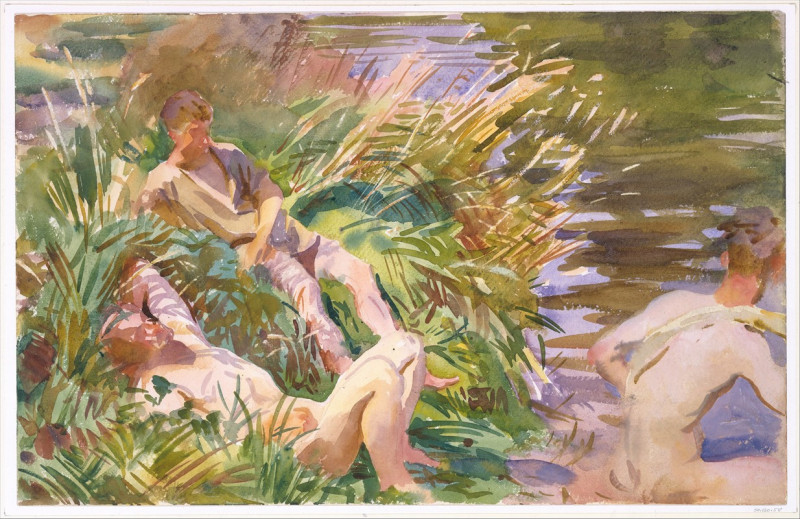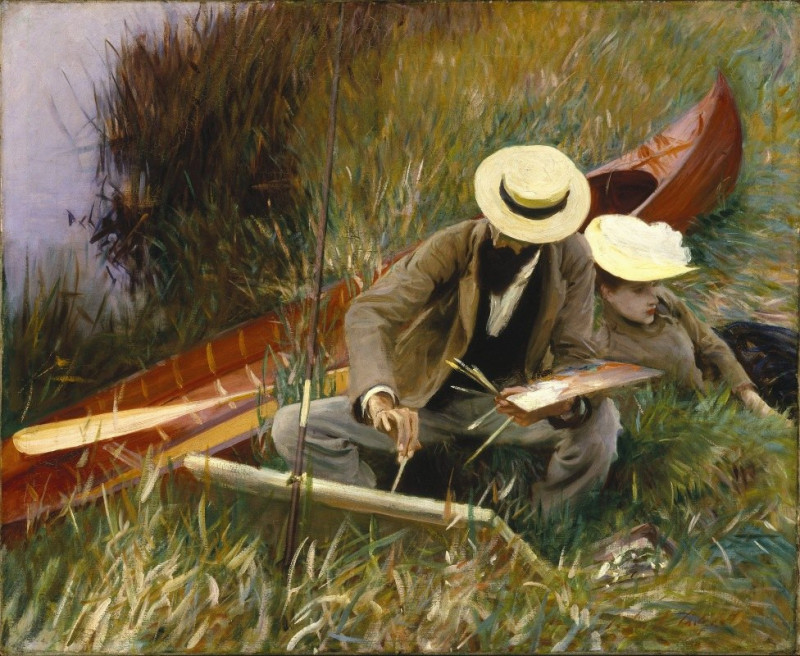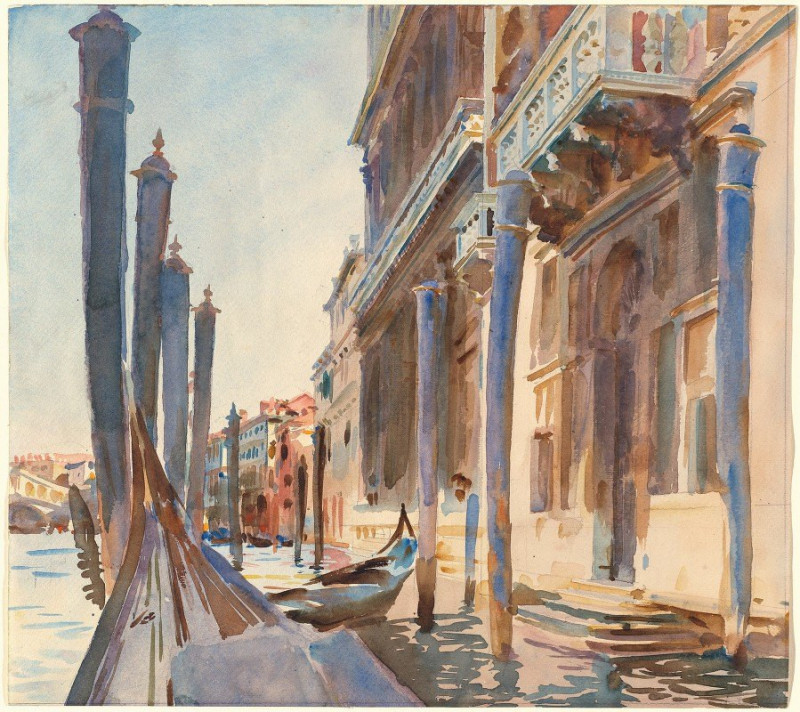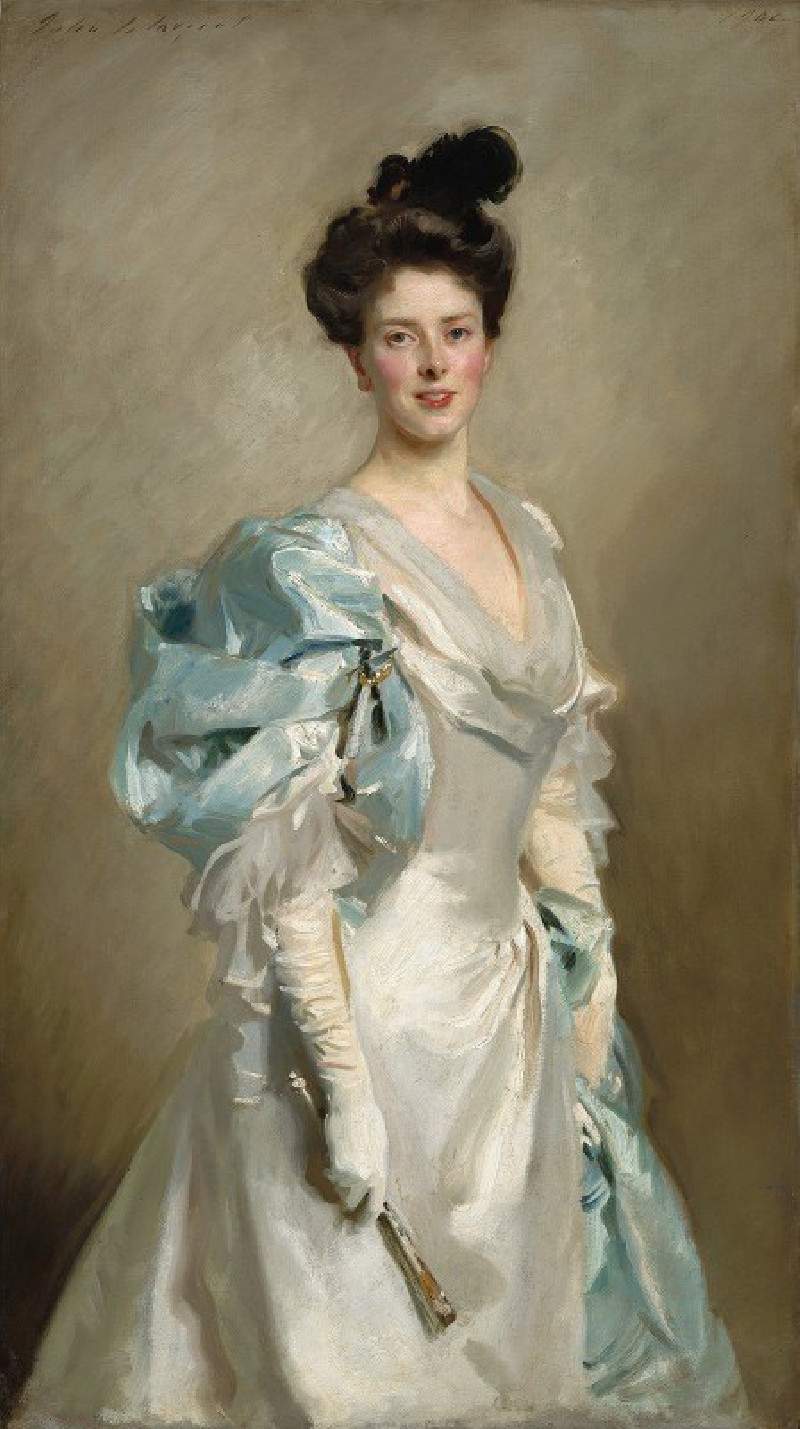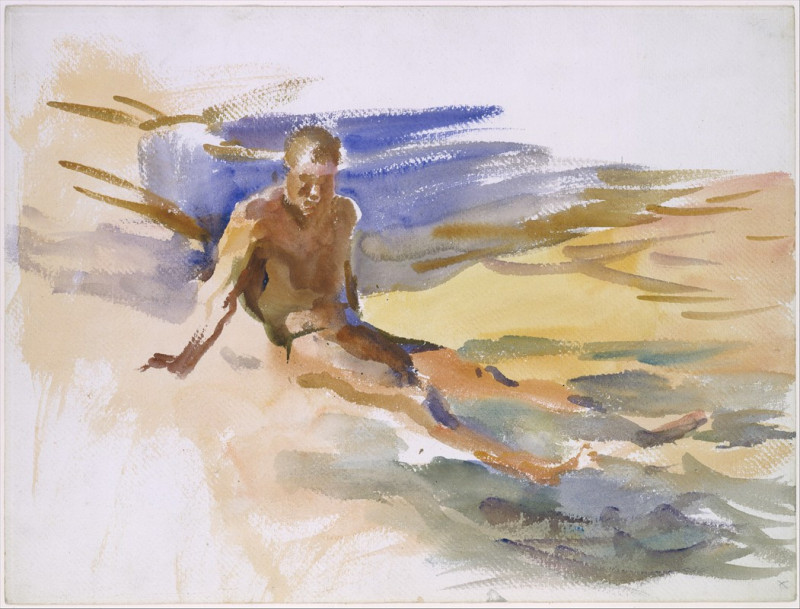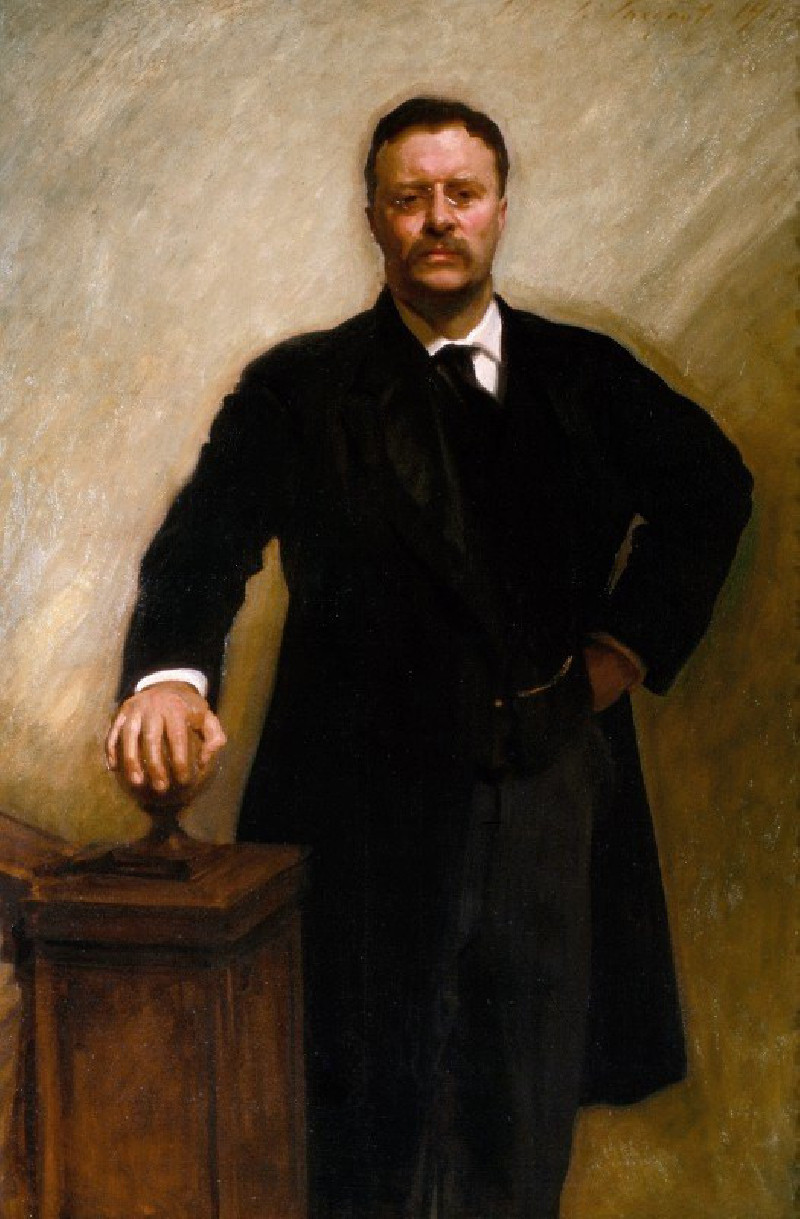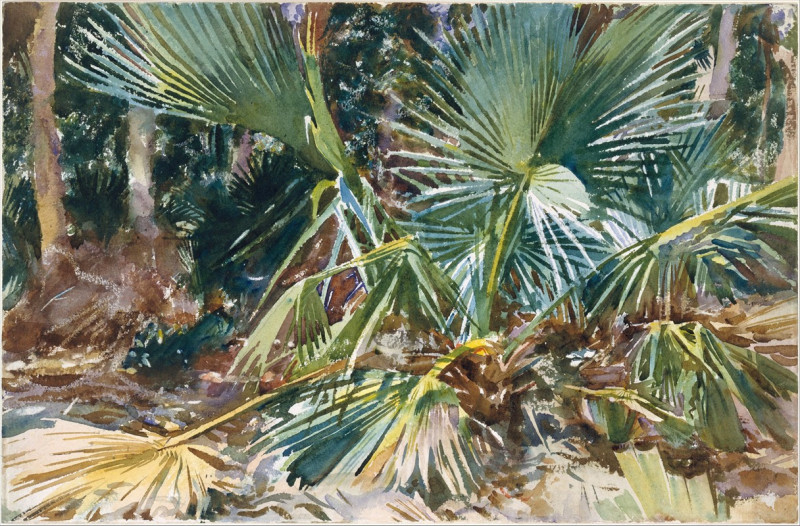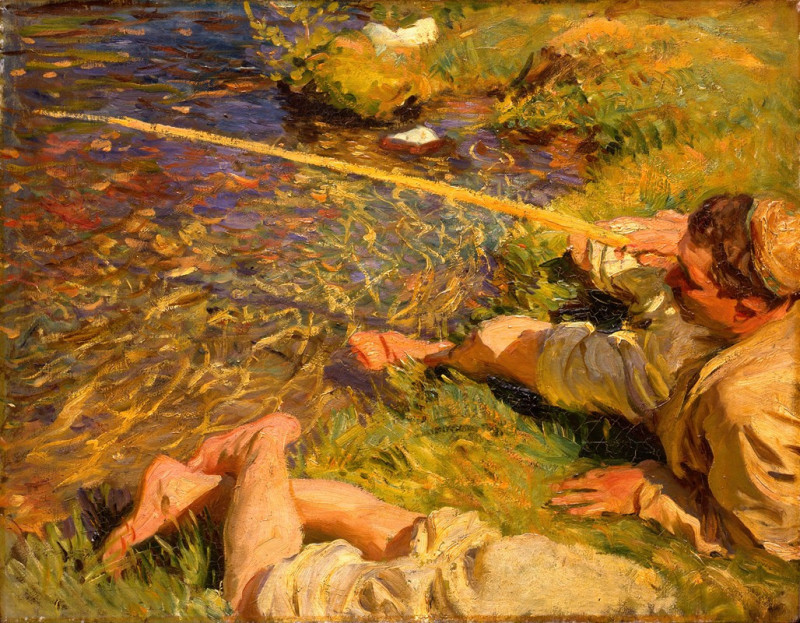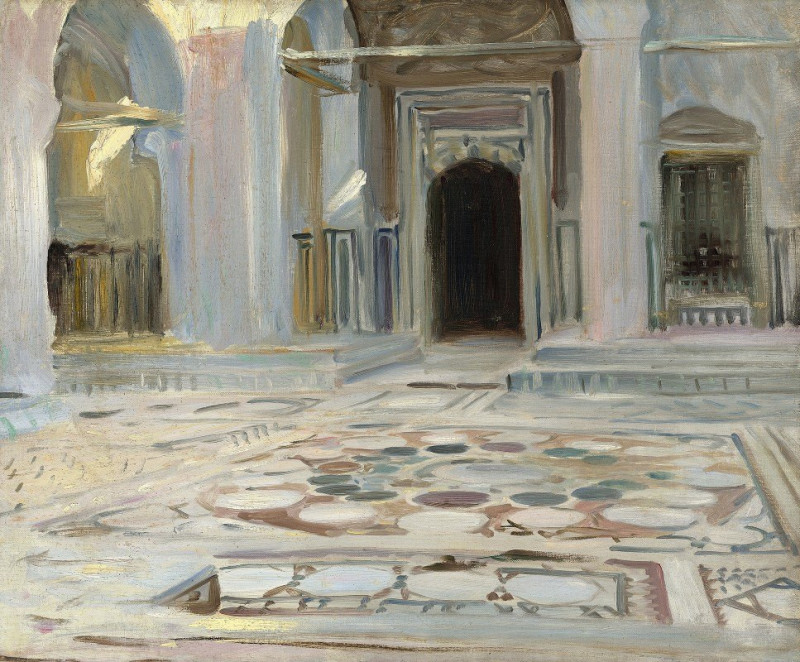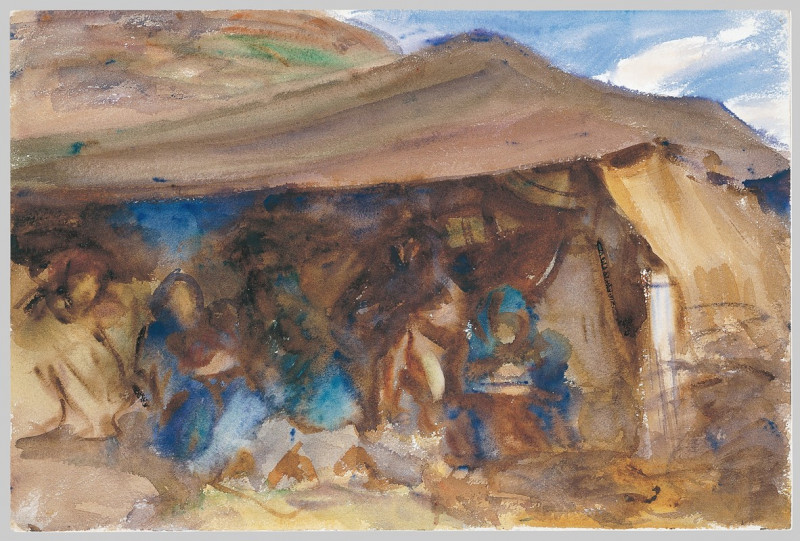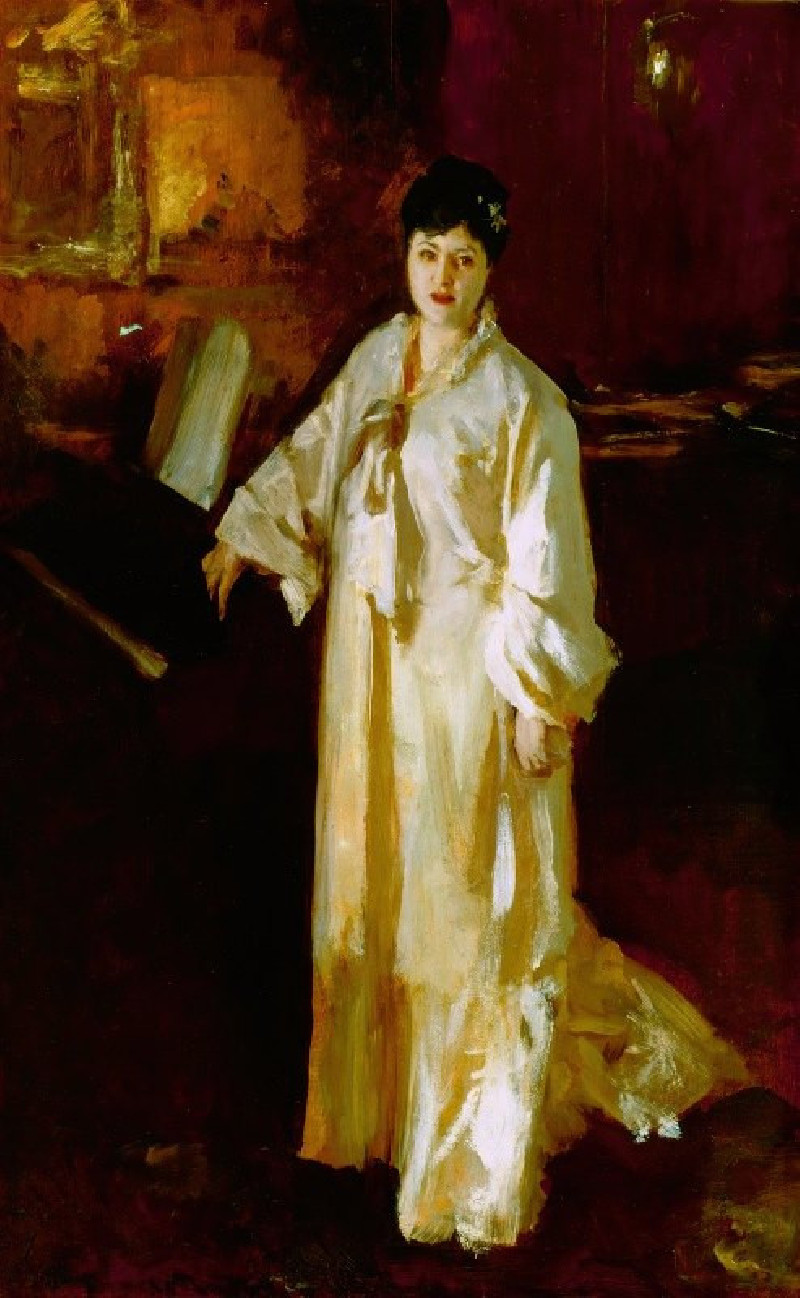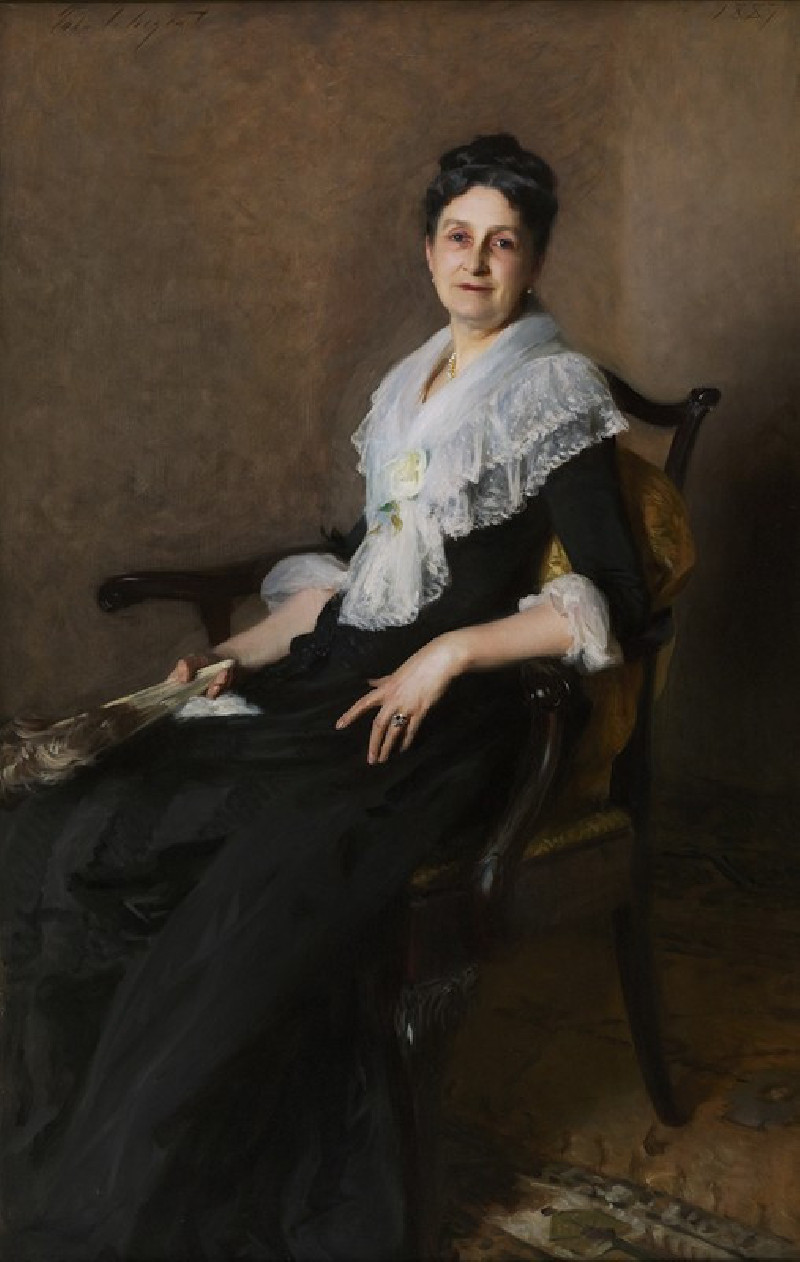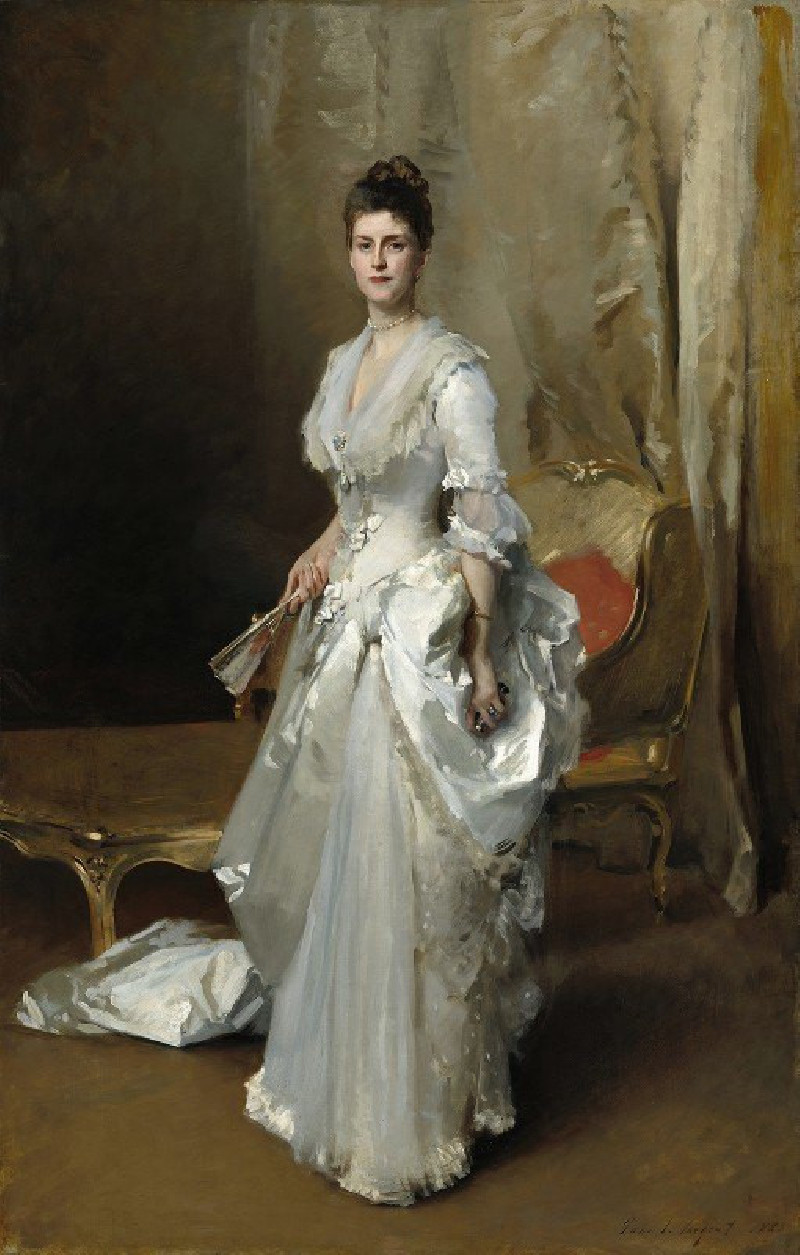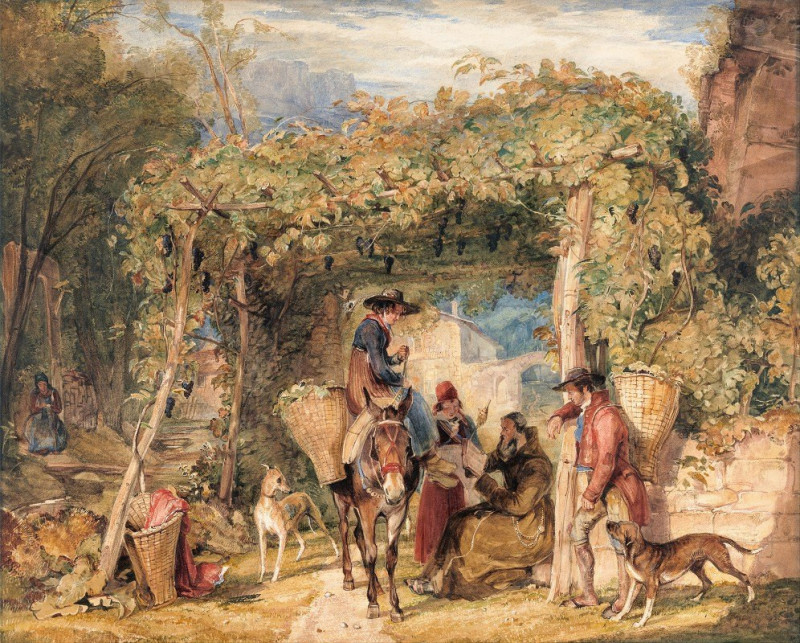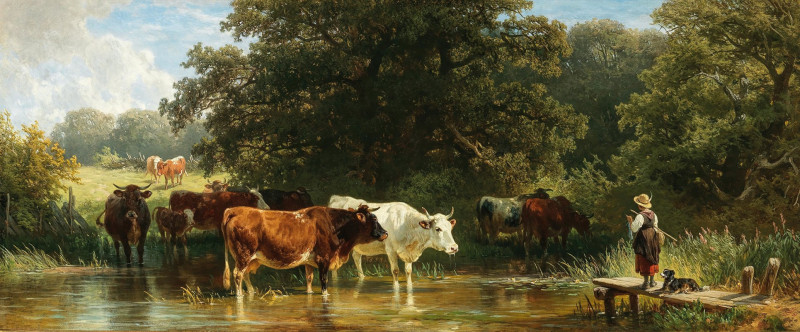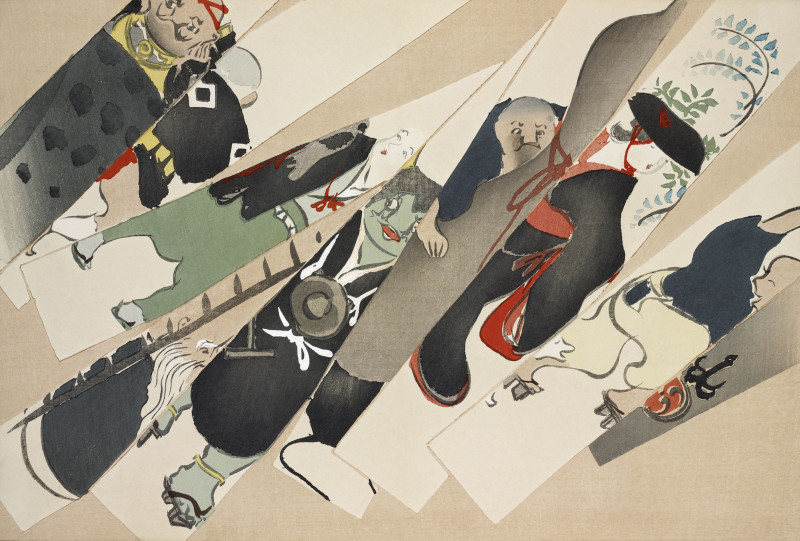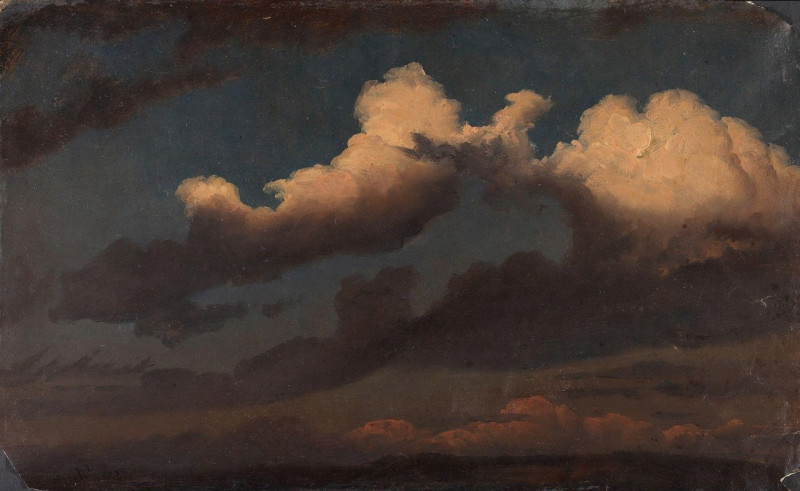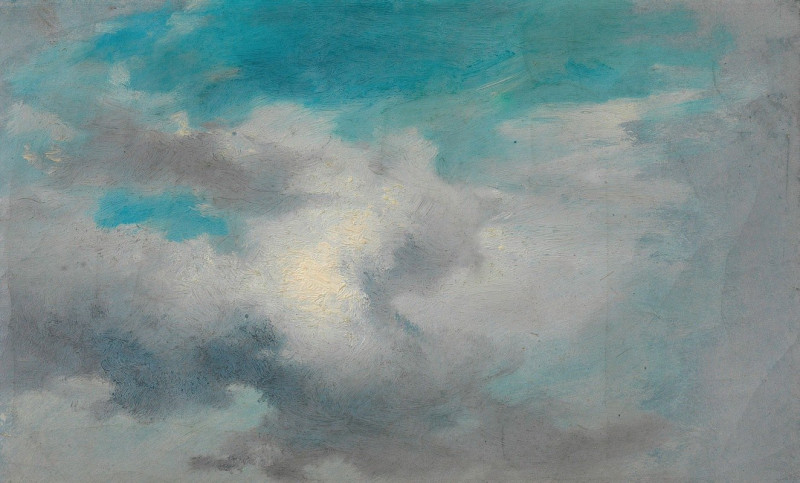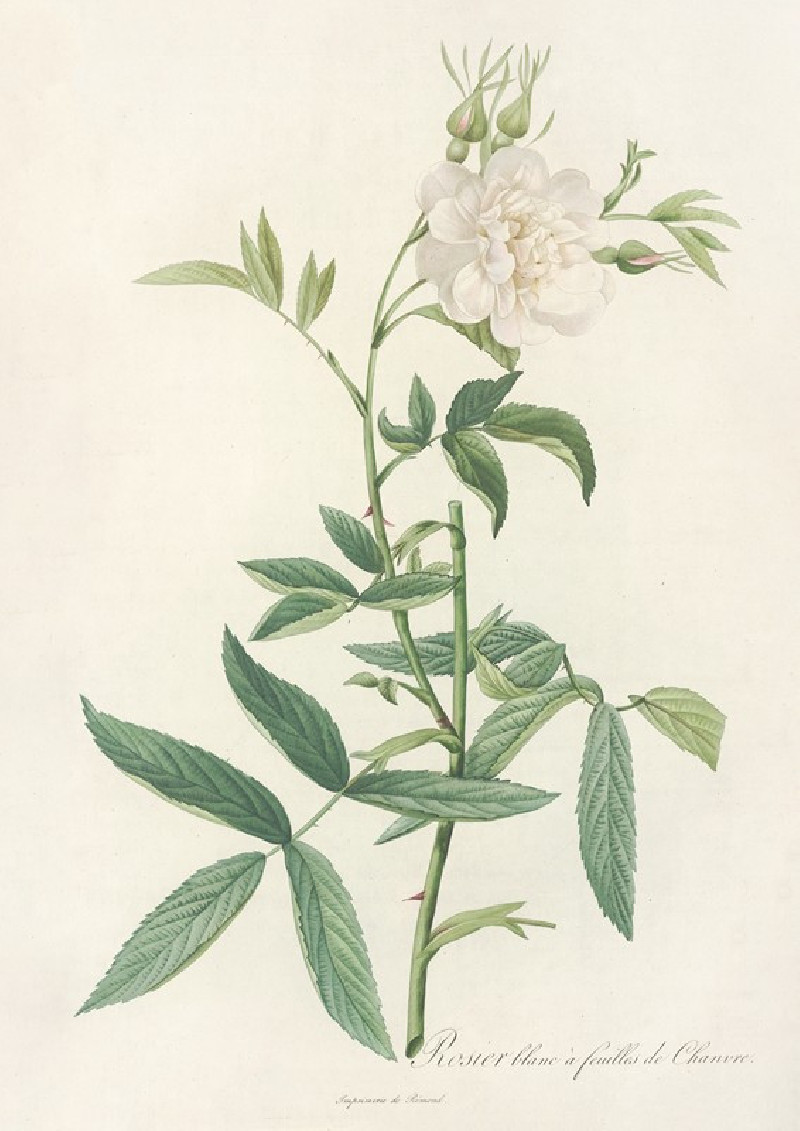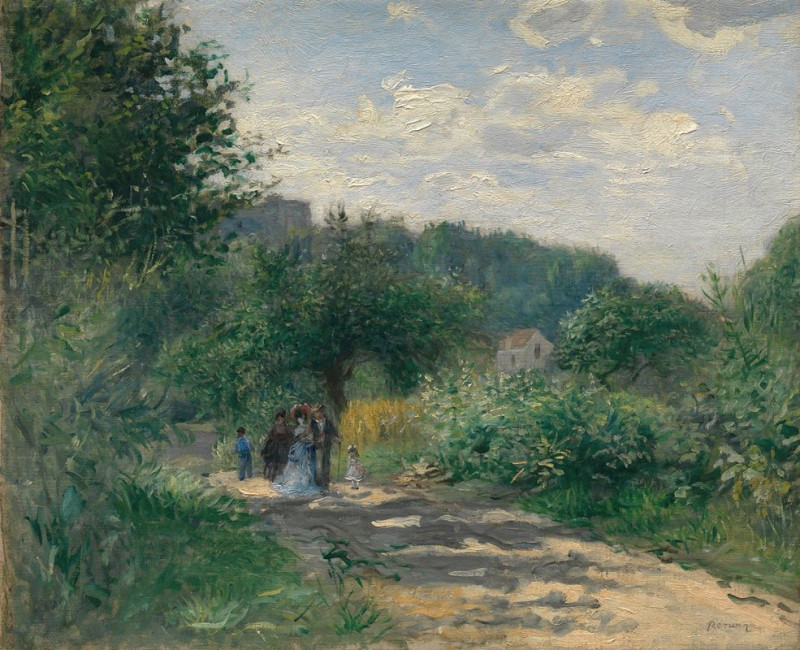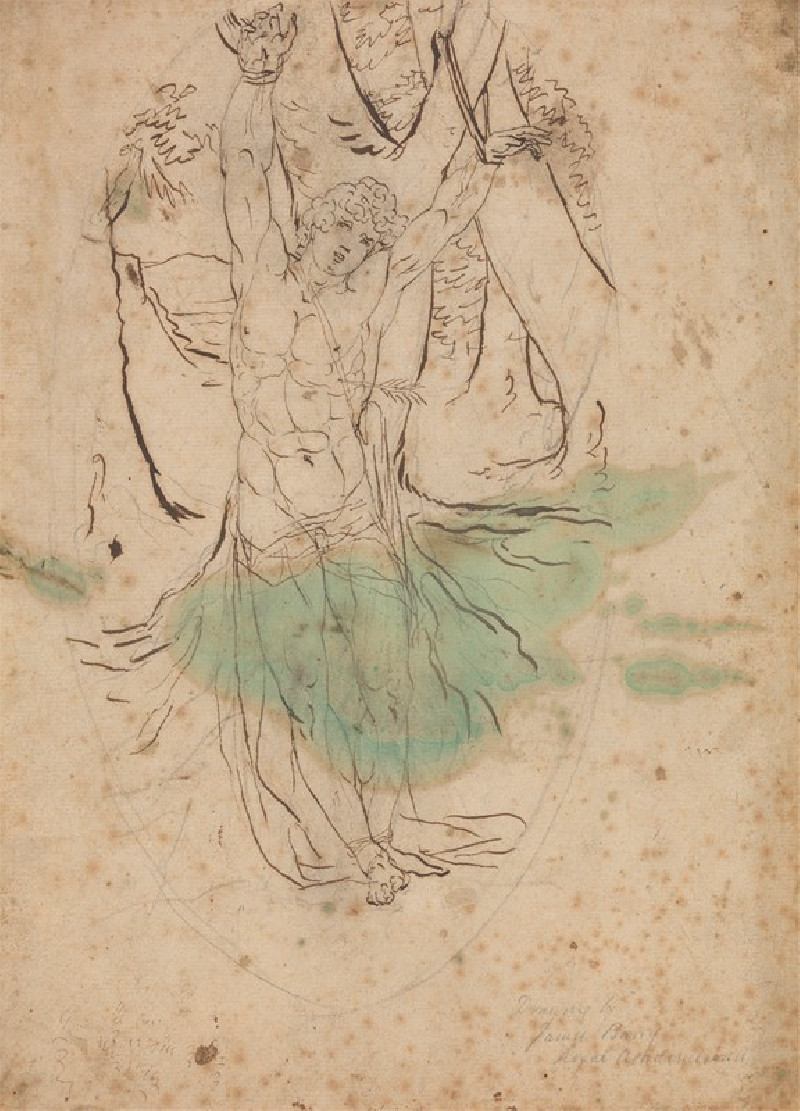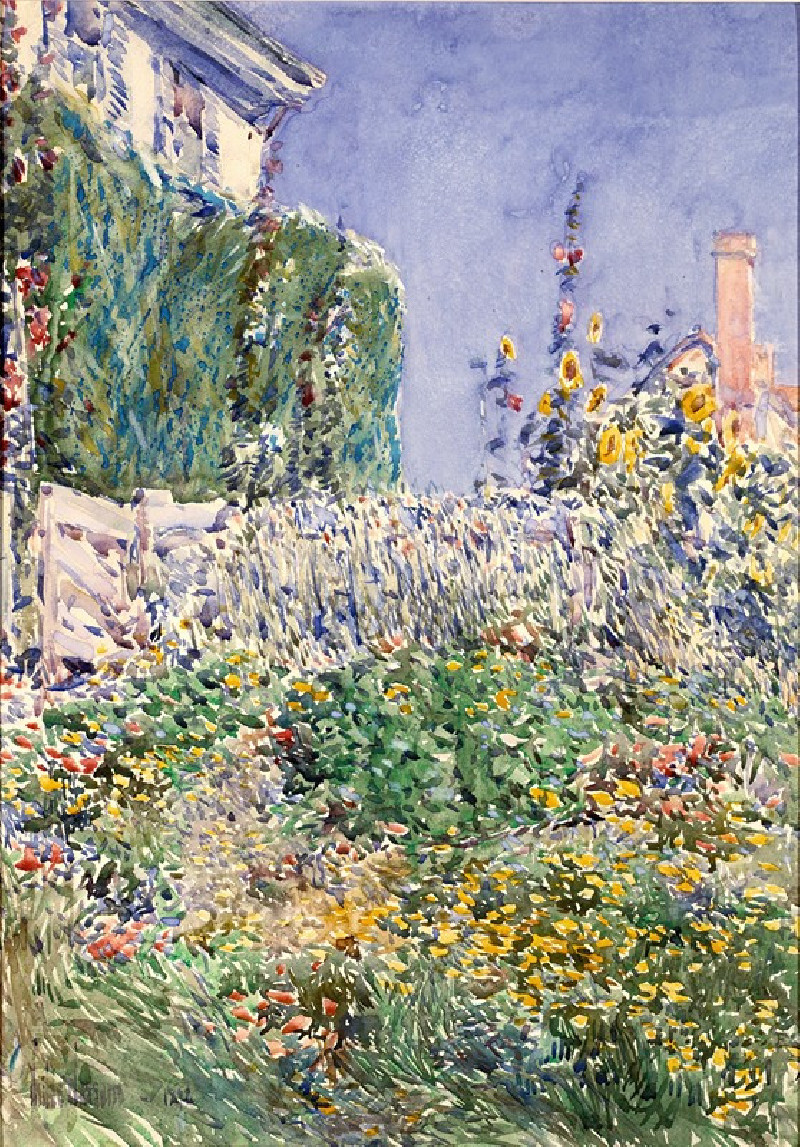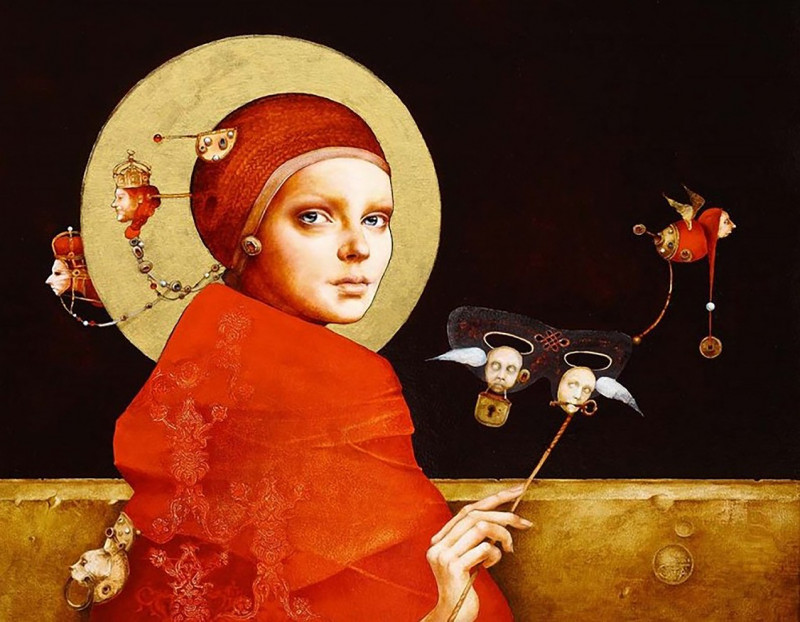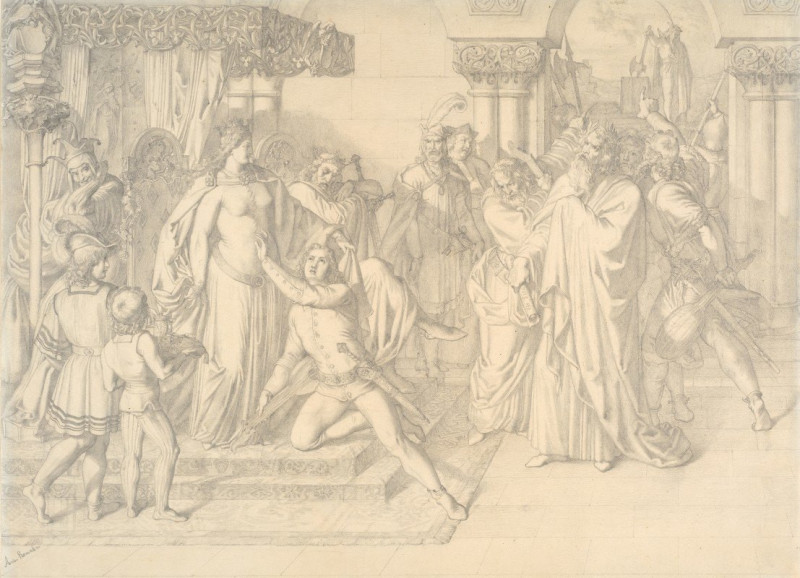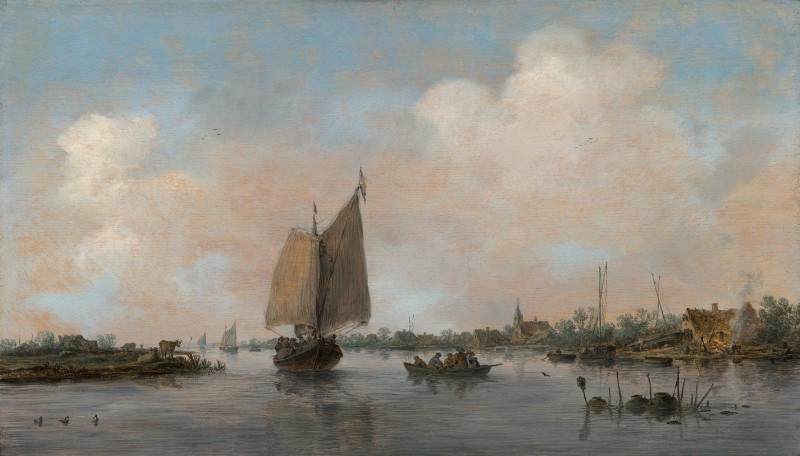Santa Sofia (circa 1891)
Technique: Giclée quality print
Recommended by our customers
More about this artwork
Dive into the majestic allure of John Singer Sargent’s “Santa Sofia,” a splendid oil painting that casts the viewer into the heart of one of Istanbul's most iconic architectural marvels: the Hagia Sophia. Painted around 1891, this artwork encapsulates the grandeur and spiritual ambience of this historic cathedral-turned-mosque.In “Santa Sofia,” Sargent masterfully captures the cavernous interior of the Hagia Sophia with a bold and expansive perspective. The viewer's eye is immediately drawn upwards to the magnificent dome, bathed in a warm, golden hue that filters through the windows, infusing the vast space with a transcendent light. This overhead light spectacularly reveals the intricate designs and the structural grandiosity of the dome and semi-domes.Below, the main hall is teeming with figures, rendered as swift, impressionistic strokes of black and blue, suggesting the movement and murmuring of a crowd—perhaps tourists or worshipers caught in a moment of daily activity or a sacred ritual. These figures add a dynamic element to the scene, bringing the architecture to life and highlighting the scale and the ongoing human connection to this ancient space.Sargent’s use of light not only illuminates the architectural prowess of the Hagia Sophia but also plays on the spiritual symbolism of light in both Christian and Islamic traditions, echoing the building's complex religious history. The play of shadow and illumination, alongside the strategic use of color, enhances the sense of depth and mystery inherent in this grand structure.“Santa Sofia” by John Singer Sargent is not merely a depiction of a space but an evocative experience that conveys the awe-inspiring atmosphere of the Hagia Sophia.
Delivery
Returns
Born in Florence to American expatriate parents, John Singer Sargent (1856–1925) is considered Europe's leading portrait painter of the Edwardian era. He was educated at both Accademia delle Belle Arti and Paris's École des Beaux Arts. While in Paris, under the guidance of Émile–Auguste Carolus–Duran, a portraitist and muralist, Sargent learned to paint directly from observation without first sketching, employing a fluidity, influenced by the Impressionists. Sargent created more than 2,900 paintings, mainly portraits and landscapes from his travels across the Atlantic, Europe, the Middle East and America.

